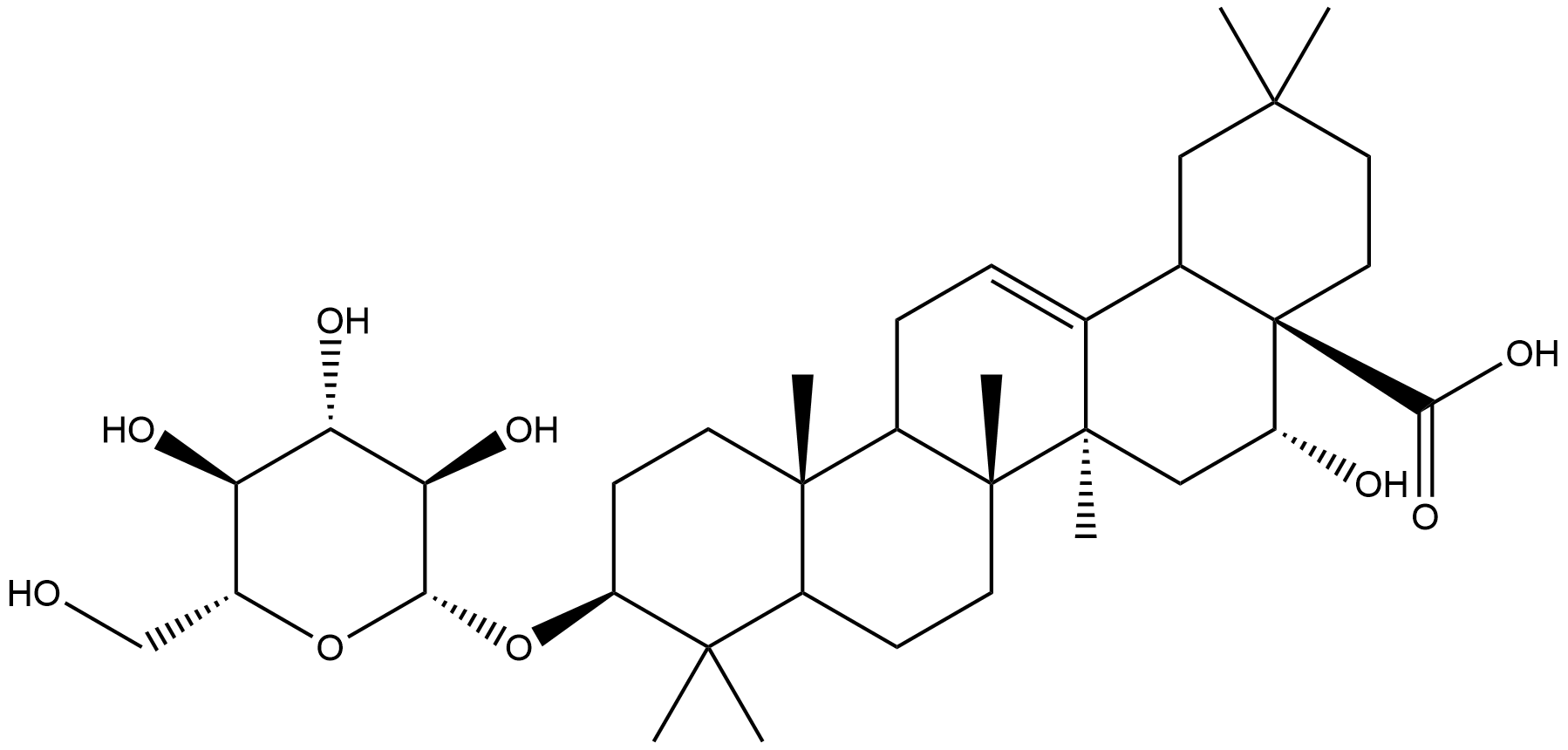
Ecliptasaponin ACAS No.:78285-90-2
|
||||||||||
 |
|
|
||||||||

| Catalogue No.: | BP0523 |
| Formula: | C36H58O9 |
| Mol Weight: | 634.851 |
Product name: Ecliptasaponin A
Synonym name: Ecliptasaponin A; Gleditsoside B; Gleditschoside B
Catalogue No.: BP0523
Cas No.: 78285-90-2
Formula: C36H58O9
Mol Weight: 634.851
Botanical Source: EcliptaprostrataL.
Physical Description:
Type of Compound: Terpenoids
Purity: 95%~99%
Analysis Method: HPLC-DAD or/and HPLC-ELSD
Identification Method: Mass, NMR
Packing: Brown vial or HDPE plastic bottle
Storage: Store in a well closed container, protected from air and light. Put into refrigerate or freeze for long term storage.
Whenever possible, you should prepare and use solutions on the same day. However, if you need to make up stock solutions in advance, we recommend that you store the solution as aliquots in tightly sealed vials at -20℃. Generally, these will be useable for up to two weeks.
The product could be supplied from milligrams to grams
Inquire for bulk scale.
Description:
Ecliptasaponin A has protective effects against the pulmonary fibrosis induced by bleomycin via reducing the oxidative stress, lung tissue inflammation, and the subsequent epithelial-mesenchymal transition.
References:
J Ethnopharmacol. 2015 Dec 4;175:172-80.
Preventive effects of Ecliptae Herba extract and its component, ecliptasaponin A, on bleomycin-induced pulmonary fibrosis in mice.
Ecliptae Herba, a nourishing traditional Chinese medicine, is also a folk medicine for the treatment of lung diseases. To investigate the anti-fibrosis effects and the underlying mechanism of the extract of Ecliptae Herba and its potential active components.
METHODS AND RESULTS:
The resulting extract (EXT) was prepared from the 80% ethanol extract of Ecliptae Herba. After intratracheally administrated with bleomycin (BLM, 5mg/kg), mice were orally treated with EXT at 2.5, 1.25, 0.625 g/kg and eclipta saponin A (ESA) at 80 mg/kg once daily for 28 day. The bodyweight, survival rate, pathological changes of lung and levels of hydroxyproline (HYP) were used to evaluate the anti-fibrotic effects. The malonaldehyde (MDA), superoxidae dismutase (SOD) activity, and the protein expressions of matrix metalloproteinase (MMP)-2, 9, tissue inhibitor of metalloproteinase-1 (TIMP-1), cyclooxygenase-2 (COX-2), α-smooth muscle actin (α-SMA) and transforming growth factor-β1 (TGF-β1) in lung tissue were analyzed by kits or western blot. Compared with BLM group, EXT administration could significantly ameliorated the pathological changes of lung, decreased the HYP content, enhanced the SOD activity, and reduced the MDA content of lung tissues. In mechanism, EXT significantly alleviated the levels of COX-2, TGF-β1, MMP-2 and α-SMA, as well as elevated the ratio value of MMP-9/TIMP-1. Additionally, the anti-fibrosis effects of ESA, a large amount of saponins isolated from Eclipta prostrata , was also evaluated by the BLM-induced model. The results showed that ESA could block BLM-induced histological changes of lung tissue and decrease the high levels of TGF-β1 and α-SMA.
CONCLUSIONS:
Ecliptae Herba has protective effects against the pulmonary fibrosis induced by BLM via reducing the oxidative stress, lung tissue inflammation, and the subsequent epithelial-mesenchymal transition. The active chemical constituents may be involved with triterpenoid saponins, such as ESA.
HPLC of Ecliptasaponin A
